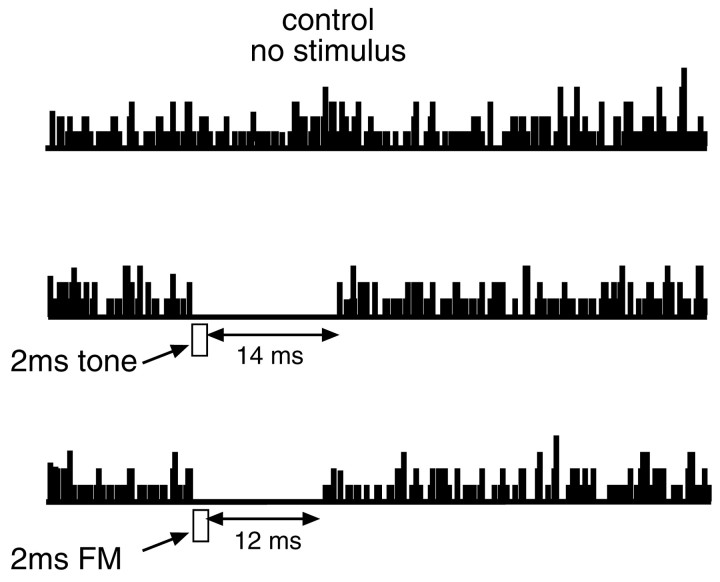Fig. 4.
Persistent inhibition in the DNLL is evoked both by tone bursts and by FM sweeps. Top, Control showing background discharges evoked by iontophoresis of glutamic and aspartic acid when no stimulus was presented. Bottom, The gaps in the background evoked by 2 msec tone bursts or 2 msec FM sweeps. The tone burst evoked a total inhibitory period of 16 msec. The initial 2 msec of inhibition occurred over the duration of the tone burst, and the inhibition then persisted for an additional 14 msec. The 2 msec FM sweep evoked a persistent inhibition of 12 msec in the same DNLL neuron. The threshold at BF was −10 dB SPL. Time barsunder responses have been shifted to illustrate the relationship between the stimulus and response durations. Tone bursts were 40.4 kHz (BF) at 30 dB SPL. The FM was 30 dB SPL, the same intensity as the tone burst, and swept from 50 to 30 kHz and thus through the BF of the neuron.

